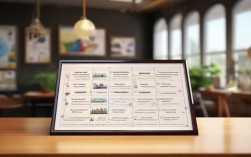Playgrounds are magical places where children laugh, run, and explore. For English learners, these spaces are also rich with useful vocabulary. Whether you're a parent teaching your child or a student improving your language skills, knowing playground-related words can make conversations smoother and more fun.

Essential Playground Equipment Terms
Understanding the names of common playground structures helps in describing activities and locations. Here are key words to know:
- Swing – A seat hanging from chains or ropes, allowing back-and-forth movement.
- Slide – A smooth, inclined surface for sliding down.
- Seesaw (or Teeter-totter) – A long plank balanced in the middle, where two people sit on opposite ends to move up and down.
- Merry-go-round – A rotating platform with seats or bars for children to hold onto.
- Climbing frame (or Jungle gym) – A structure with bars for climbing.
- Sandbox – A pit filled with sand for digging and building.
- Monkey bars – Horizontal bars for swinging hand-over-hand.
- Spring rider – A toy mounted on springs, often shaped like animals or vehicles.
Using these words in sentences:
- "The children take turns on the swing."
- "She climbed to the top of the slide before coming down."
Action Verbs for Playground Activities
Playgrounds are full of movement. These verbs describe what kids do:
- Swing – Moving back and forth on a swing.
- Slide – Going down a slide.
- Climb – Moving upward using hands and feet.
- Jump – Pushing off the ground with both feet.
- Run – Moving quickly on foot.
- Balance – Keeping steady on a narrow surface.
- Push/Pull – Applying force to move something (e.g., pushing a friend on a swing).
- Dig – Using hands or tools to move sand or dirt.
Example sentences:
- "He loves to climb the jungle gym."
- "They take turns pushing each other on the swing."
Safety and Interaction Phrases
Playgrounds are fun but require safety awareness. Useful phrases include:

- "Be careful!" – A warning to avoid accidents.
- "Wait your turn." – Encouraging patience.
- "Hold on tight!" – Reminding kids to grip swings or bars securely.
- "Don’t push!" – Preventing rough play.
- "Let’s share." – Promoting cooperation.
Parents and teachers often use these expressions to guide children.
Descriptive Words for Playground Fun
Adding adjectives makes language more vivid:
- Fast/Slow – Describing speed (e.g., a fast slide).
- High/Low – Referring to height (e.g., a high climbing frame).
- Fun/Exciting – Expressing enjoyment.
- Safe/Dangerous – Discussing risk levels.
- Colorful – Many playgrounds have bright equipment.
Example usage:
- "The new slide is very fast!"
- "The playground looks colorful and inviting."
Games Played in Playgrounds
Beyond equipment, children enjoy games like:
- Tag – A chasing game where one person is "it."
- Hide and Seek – Hiding while one person searches.
- Hopscotch – Jumping through numbered squares drawn on the ground.
- Jump Rope – Skipping over a swinging rope.
These games have simple rules and encourage social interaction.

Learning Through Play
Playgrounds offer more than physical activity—they help language development. Children learn words naturally while engaging with others. Parents can reinforce vocabulary by:
- Naming objects (e.g., "This is a swing.").
- Describing actions (e.g., "You are sliding down!").
- Encouraging questions (e.g., "What do you want to play next?").
For English learners, visiting a playground provides real-life practice.
Common Questions About Playgrounds
Here are some typical questions and answers:
- "What’s your favorite playground equipment?"
- "I love the swings!"
- "Can you climb the monkey bars?"
- "Yes, but it’s tricky!"
- "Is the slide safe for toddlers?"
- "Only if it’s low and supervised."
Practicing these exchanges builds confidence.
Cultural Differences in Playgrounds
Playgrounds vary globally. Some countries emphasize natural materials like wood, while others use bright plastic. In Japan, playgrounds often include exercise equipment for adults. Scandinavian designs focus on risk-taking to build resilience. Knowing these differences expands cultural awareness.

How to Teach Playground Vocabulary
Effective methods include:
- Flashcards with pictures of equipment.
- Role-playing conversations.
- Visiting different playgrounds to see varied structures.
- Reading children’s books about playground adventures.
Repetition and real-world use help retention.
The Joy of Playground Language
Playgrounds unite children across languages. Even with limited English, kids communicate through play. Words like "slide," "swing," and "run" are universal in action. Observing how children interact shows language learning in its purest form—fun and natural.
For anyone learning English, playground vocabulary is practical and engaging. Next time you visit, try naming each piece of equipment or action. You’ll find that language grows best when paired with joy and movement. The playground isn’t just a place for play—it’s a classroom without walls.


